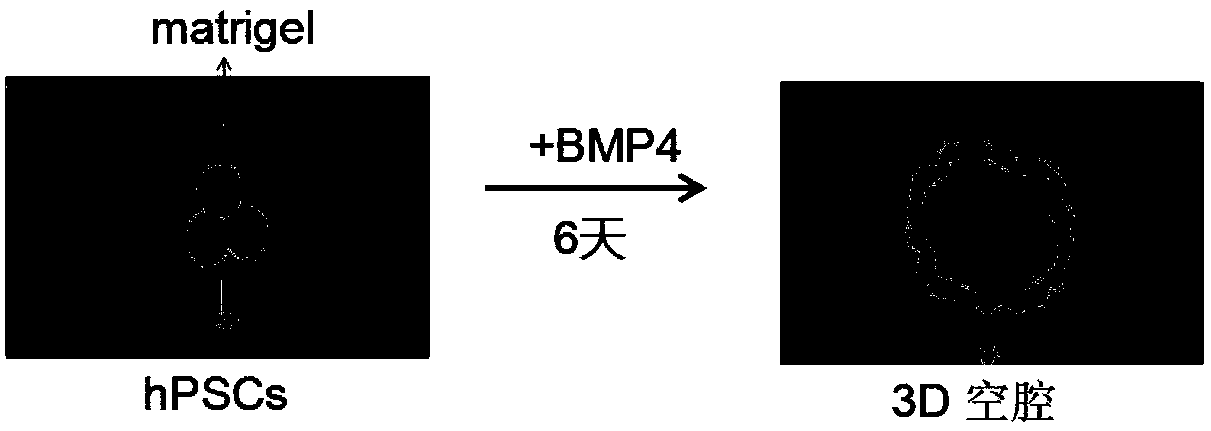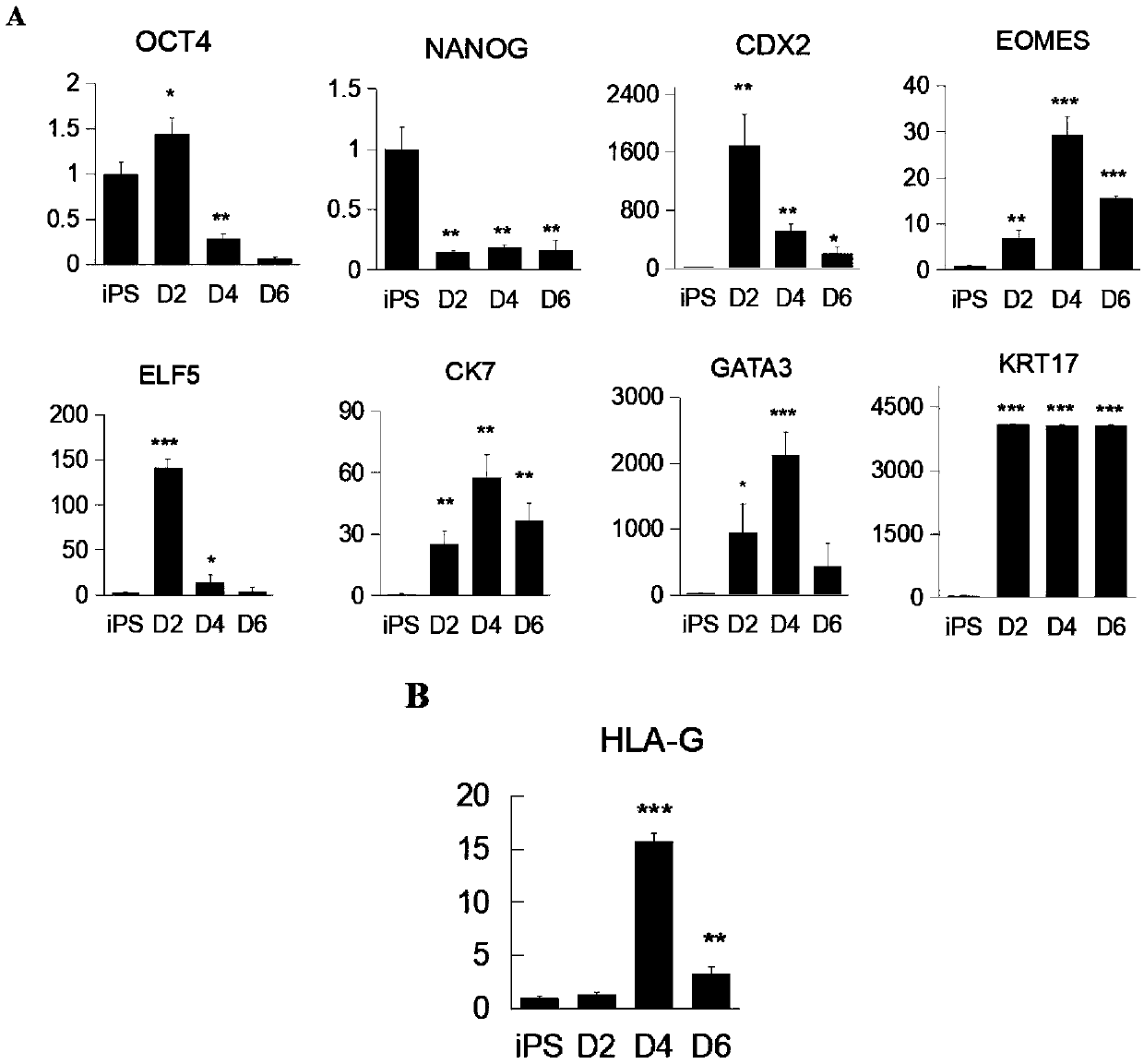Human early placenta development model establishing method based on organs-on-chips
A technology of organ chips and developmental models, applied in biochemical equipment and methods, embryonic cells, microorganisms, etc., can solve problems such as the undetermined applicability of human hPSCs, and achieve great application value and strong repeatability
- Summary
- Abstract
- Description
- Claims
- Application Information
AI Technical Summary
Problems solved by technology
Method used
Image
Examples
Embodiment 1
[0025] Establishment of human early placental development model using hPSC self-assembled traits
[0026] The present invention uses a three-dimensional matrix material, which is a commercially available artificial basement membrane (Matrigel) (product number ref: 354277, company Corning).
[0027] A method for establishing a human early placenta development model based on an organ chip of the present invention adopts the above three-dimensional matrix material, and specifically includes the following process:
[0028] (1) Orifice plate modification and human pluripotent stem cell (hPSC) inoculation and culture
[0029] The 6-well plate was first modified with artificial basement membrane (Matrigel) and placed in a 4° refrigerator, then placed in a 37° incubator for 20 minutes, digested with cell digestion solution at room temperature, scraped off the cell mass with a cell scraper, and centrifuged at 600r for 2 minutes. The mTeSR1 medium containing Y27632 was resuspended to f...
Embodiment 2
[0037]Characterization of cell morphology and function differences between 2D and 3D matrices in an organ-on-a-chip-based model of human early placenta development
[0038] A human placenta development model was established using the same artificial basement membrane and cell seeding density as in Example 1. Here, the difference between hPSC induced differentiation under 2D conditions and 3D conditions in Case 1 is compared, which fully demonstrates that the model constructed in the three-dimensional matrix of the present invention has a nearly physiological three-dimensional structure, and is comparable to the traditional two-dimensional monolayer. In contrast, these cavities also showed efficient differentiation of trophoblasts.
[0039] The process of inducing hPSC differentiation under 2D conditions is as follows:
[0040] (1) Orifice plate modification and human pluripotent stem cell (hPSC) inoculation and culture
[0041] The 6-well plate was first modified with artifi...
Embodiment 3
[0048] In vivo establishment of an in vitro model of human early placental development using the self-assembly properties of hPSCs
[0049] The present invention uses a three-dimensional matrix material, which is a commercially available artificial basement membrane (Matrigel) (product number ref: 354277, company Corning).
[0050] A method for establishing an in vitro simulated human early placenta development model of the present invention adopts the above three-dimensional matrix material, and specifically includes the following process:
[0051] (1) Orifice plate modification and human pluripotent stem cell (hPSC) inoculation and culture
[0052] The 6-well plate was first modified with artificial basement membrane (Matrigel) and placed in a 4° refrigerator, then placed in a 37° incubator for 40 minutes, digested with cell digestion solution at room temperature, scraped off the cell mass with a cell scraper, and centrifuged at 600r for 1 minute. The mTeSR1 medium containi...
PUM
 Login to View More
Login to View More Abstract
Description
Claims
Application Information
 Login to View More
Login to View More - R&D
- Intellectual Property
- Life Sciences
- Materials
- Tech Scout
- Unparalleled Data Quality
- Higher Quality Content
- 60% Fewer Hallucinations
Browse by: Latest US Patents, China's latest patents, Technical Efficacy Thesaurus, Application Domain, Technology Topic, Popular Technical Reports.
© 2025 PatSnap. All rights reserved.Legal|Privacy policy|Modern Slavery Act Transparency Statement|Sitemap|About US| Contact US: help@patsnap.com



